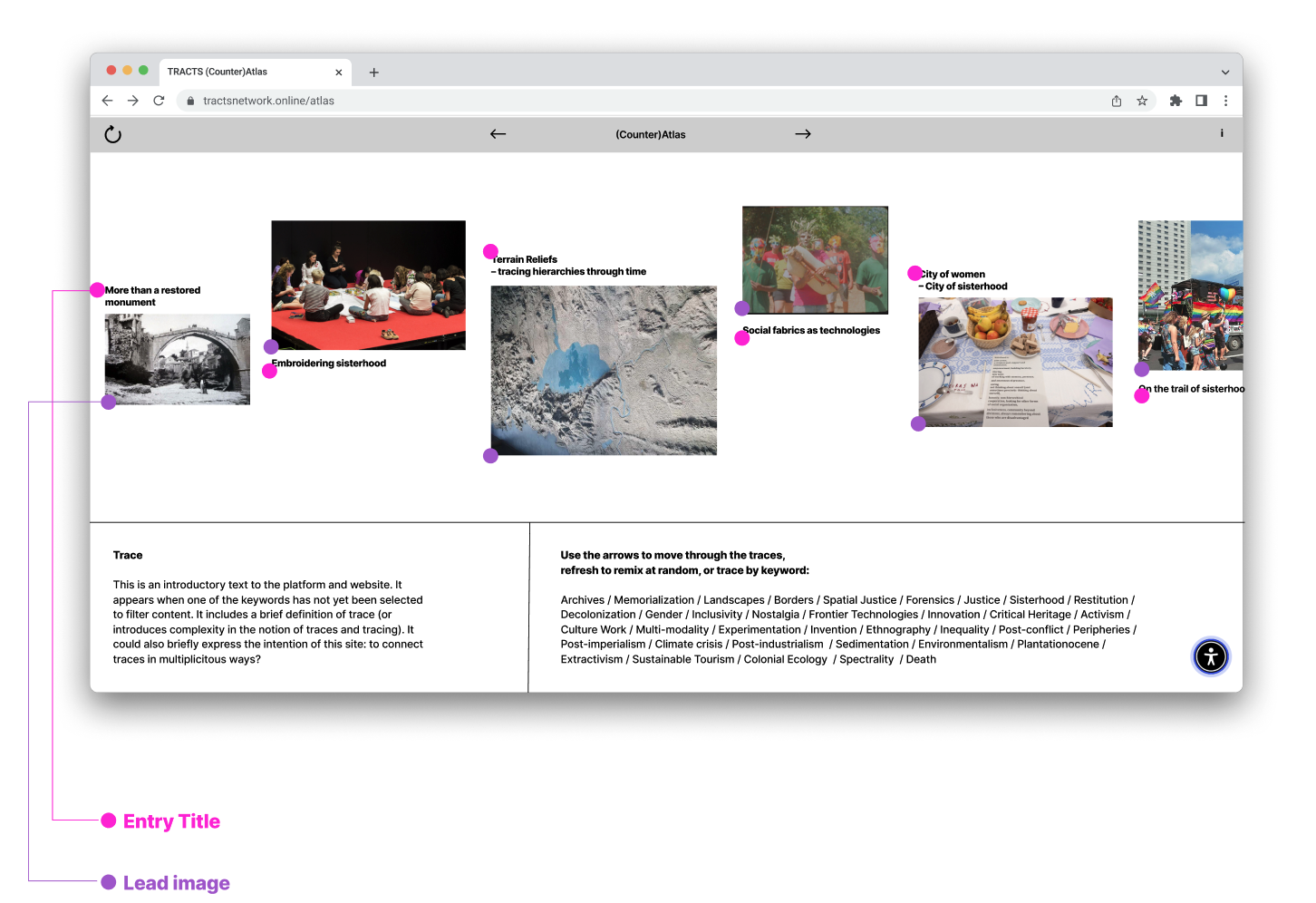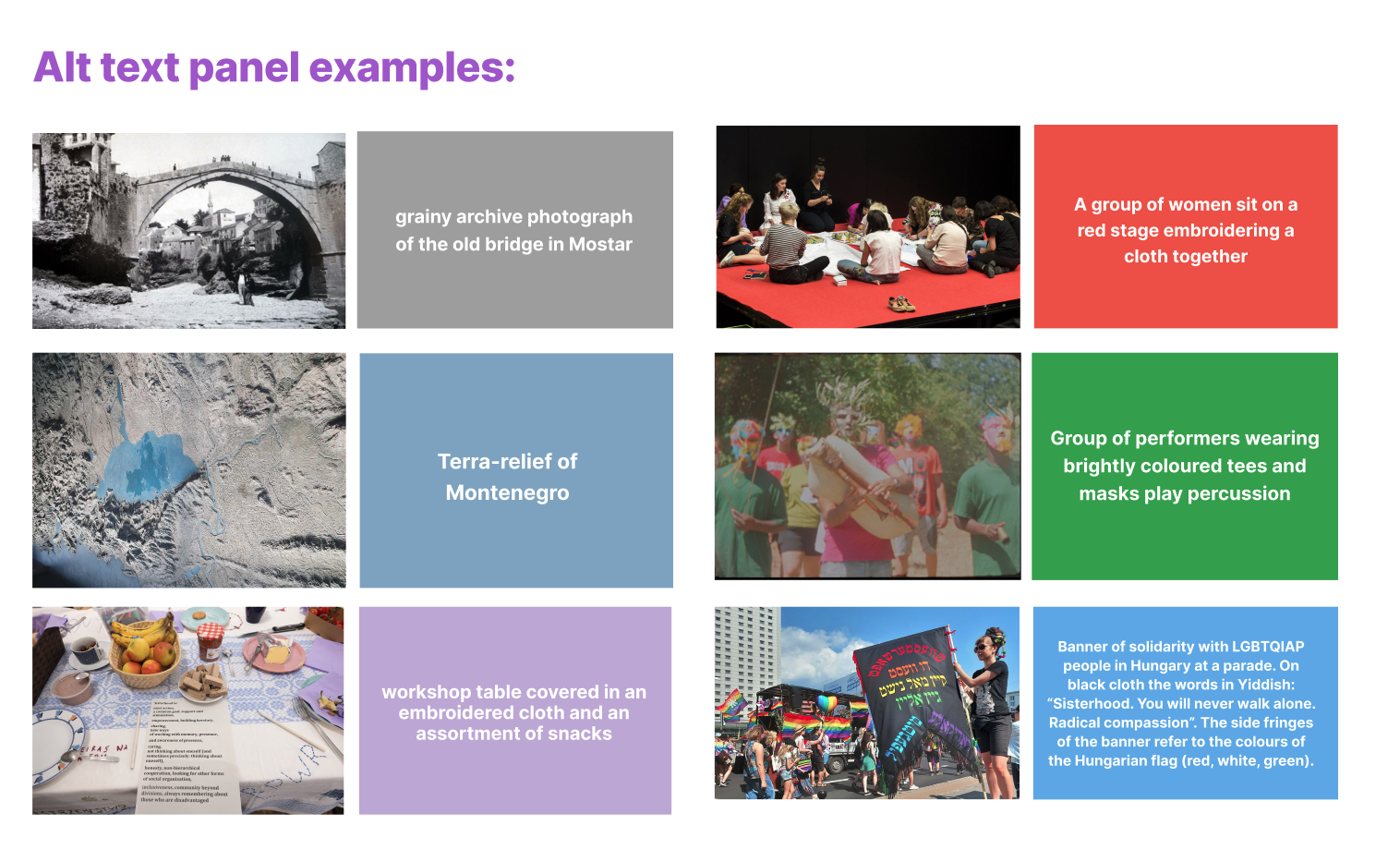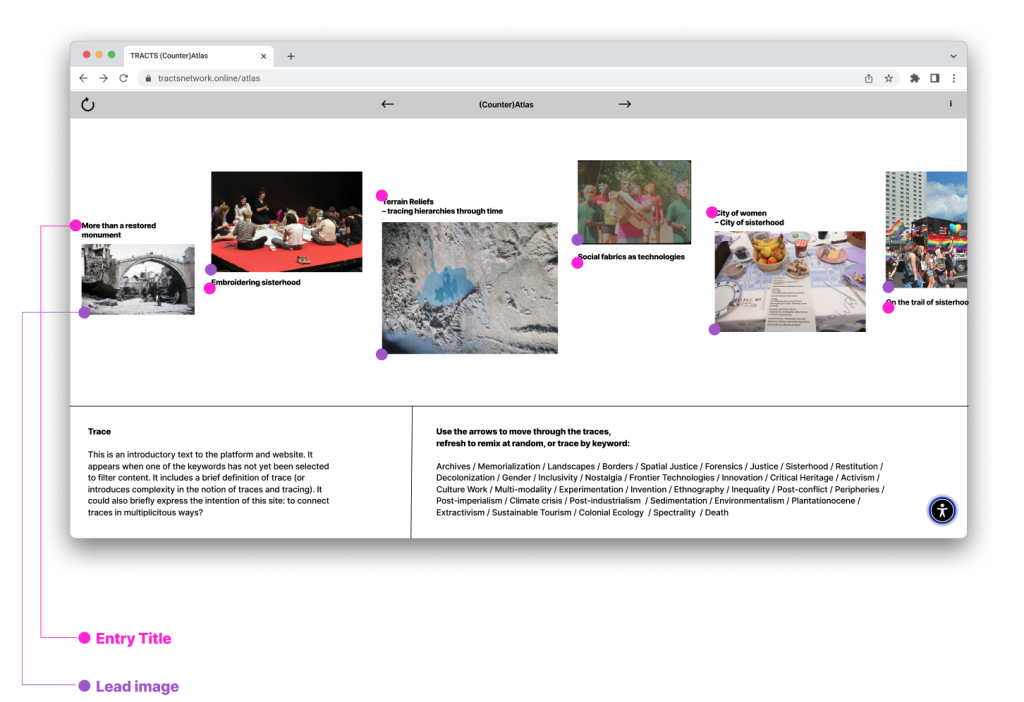…but we need your help!
We are delighted to announce that the (Counter) Atlas is on its way, and we are now at the point of gathering data to input to the Atlas.
So, we come to you and ask for a few minutes of your time.
If you have been involved in out Action at all, whether it has been in receipt of a grant such as a short term scientific mission grant, you have attended a conference, a training school or any other event at all, we would love to hear from you!
We have a form that is ready for completion here, and queries can be forwarded to Magda Buchczyk, Lee Douglas or you can forward over to the general Action email – tracts@st-andrews.ac.uk
Please see the video attached my the wonderful Cooper Lovano, for a complete guide on how to complete the form, and you will also find below hints and tips (media sizes, formats etc.) and we look forward to hearing from our members soon!
The (Counter)Atlas is an interactive resource that makes the work of the TRACTS Action accessible to a wider audience. It presents the collaborative efforts of the Action in a clear and practical format, enabling readers to apply its insights in their own work, research, or daily lives.
link to form

Entries in the (Counter)Atlas consist of text and images/audio/film.
Images
• Accepted Formats: .jpg, .png, .webp
• Maximum Dimensions: 2000 pixels on the longest side
• Maximum File Size: 5 MB per image
Audio
• Accepted Formats: .mp3, .m4a, .ogg
• Maximum File Size: 20 MB per audio file
• Recommended Duration: Under 5 minutes
Video
• Accepted Format: .mp4 (H.264 codec)
• Resolution: Up to 1080p (1920×1080)
• Frame Rate: 24–30 fps
• Maximum File Size: 50 MB per video
• Recommended Duration: Under 5 minutes
Note: The maximum individual file size allowed in Jotform is 1GB. However, to ensure smooth uploads and storage management, we recommend keeping individual file sizes well below this limit.
Step-by-step approach to editing entries
- Name of primary contributor / additional contributors
- Locate the project
- Title your entry
- Lead Image
- Alternative Text
- Caption your image
- Synopsis
- Select applicable keywords
- Overview
1. Name of primary contributor / additional contributors
This is your chance to highlight the people behind the projects.
2. Locate the Project
Please name the location of the entry, rather than your institutional affiliations.
3. Title your entry
A short (maximum one line) title which hooks people into your entry
4. Lead Image
This will be the lead image associated with your entry. It will appear on the landing page before any other content. It should give an impression of your project overall and entice the visitor to read more. Please make sure that you have permission to use and share the media files. It is best if you are the owner of these files.
5. Alternative Text
Providing alt text for all of your images will help people access your entry, for example when using a screen reader. Harvard University has a helpful guide on writing alt text, and for even more resources we recommend Alt Text as Poetry .

6. Caption your image
Unlike alt text, captions appear below your image and are visible to all viewers. Use this space to provide context, explain the image’s relevance, and include any necessary credits or copyright information.
7. Synopsis
Start with a hook or a broad perspective. Rather than diving straight into individual components, open with a wide-angle view that situates the topic within its broader context. Begin with a compelling hook—a concise, engaging statement that captures the central premise or thesis of your story. This one- or two-sentence insight should clearly express what sets your narrative apart and draw the audience in before moving into the specifics.
8. Select applicable keywords
The keywords have been collated by the (Counter) Atlas curatorial team and will offer visitors to the website alternative routes of navigation. We recommend choosing no more than 5 keywords for each entry.
9. Overview
This text will appear on the project/entry page and is your chance to go into more detail about your project.
- Remember, the Details Are in the Academic Papers
While our communication should be engaging and informative, it’s important to note that the specific details of our research are found within our research outputs. Our communication serves as a bridge, inviting others to explore the deeper layers of our work.
- Craft a (Heroic) Narrative
Create a compelling narrative that not only informs but also inspires action. Consider why it is interesting, how you’ll tell the story and how your piece will advance the conversation. Think of the ways in which each entry responds to the methodological, ethical and conceptual challenge of the trace. Narratives can revolve around societal challenges or discoveries and invite our audience to engage actively in the subject matter. Think of our communication as a hero’s journey, with challenges, triumphs, and a call to action. - Highlight the Key Discovery
Clearly identify the gap in knowledge or the unanswered questions within the topic. This step sets the stage for the exploration and investigation that follows. What type of research or background information will you provide for this story, and what other points or conclusions will be made? - Identify your contribution to debates on trace and tracing
- Consider our diverse audience
(Counter)Atlas targets a wide range of individuals, including academics, scientists, artists, activists, and a broader audience that encompasses our extensive network of over 280 members, academics in arts and social sciences, visual practitioners interested in discussions on trace and tracing in areas like climate change, social justice, and technology, participants from the Extinction Rebellion movement, ecofeminists, and interdisciplinary students and researchers. These groups represent the individuals (counter)Atlas actively engages and collaborates with, reflecting our inclusive and expansive outreach efforts. - Include One or Two References:
Support our narrative with one or two references or examples that illustrate what we already know or have discovered. These references serve as anchor points to ground our discussion.
Our approach to communication should prioritise clarity, engagement, and inspiration. For inspiration, you can draw from Randy Olson’s “Houston, We Have a Narrative” (2015), which offers valuable insights into narrative structure. Olson introduces the concept of “ABT” (And, But, Therefore) as the core elements of storytelling. This structure provides momentum (And), introduces conflict (But), and leads to resolution (Therefore). By employing ABT, we can maintain an optimal narrative structure, avoiding the pitfalls of narratives that lack structure (resembling a list of facts) or are overly complex with multiple storylines. By following these steps and drawing from Olson’s insights on narrative structure, we can effectively convey our message and fulfil the communication goals.
Where can people find out more?
Link to any other websites/socials with information about the event. Did you publish anything? do you have an Instagram or website post we can include?

